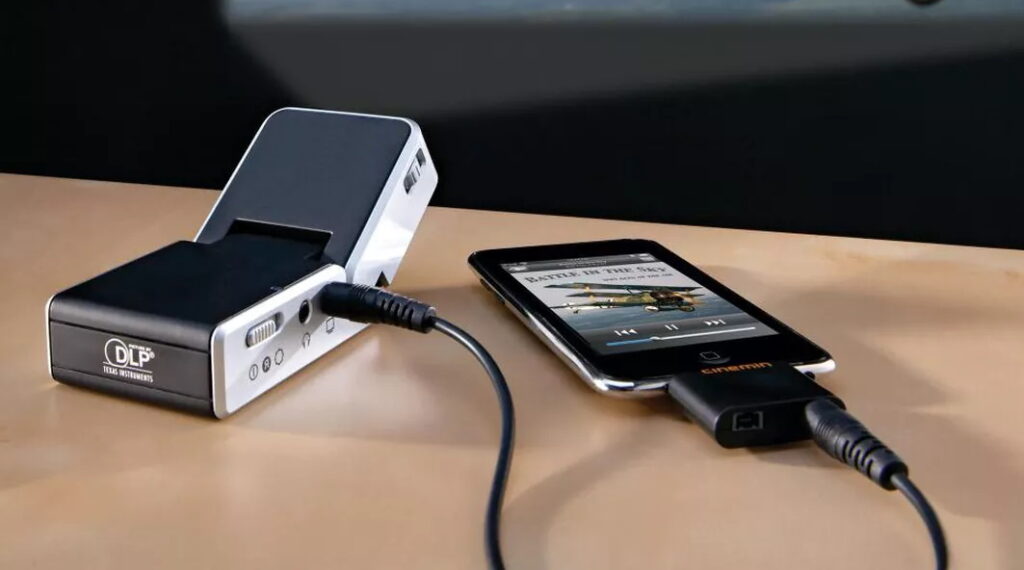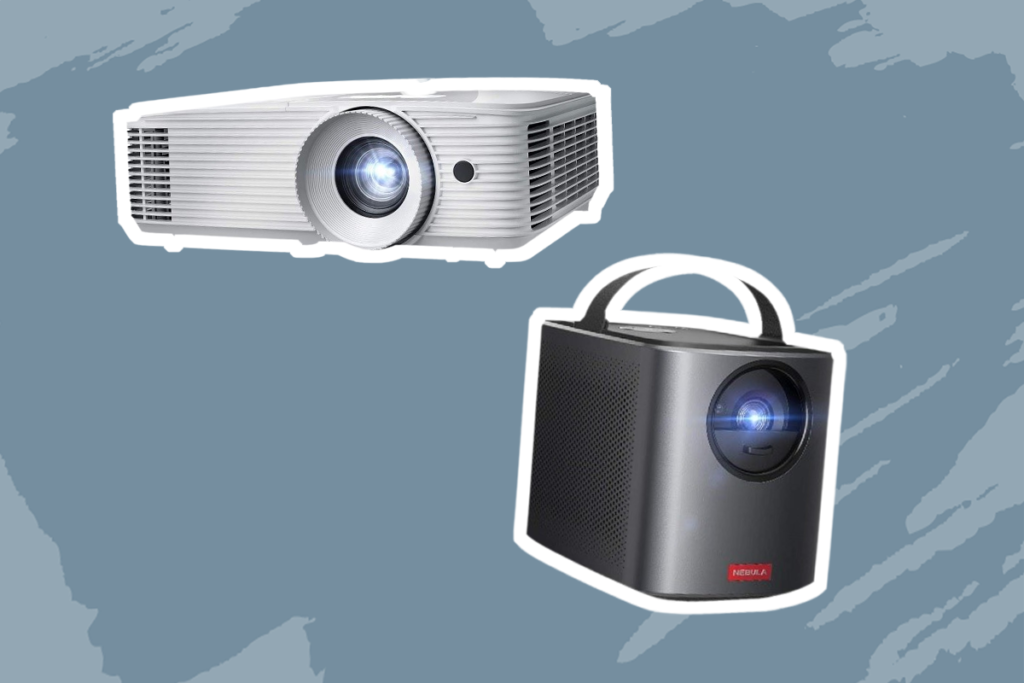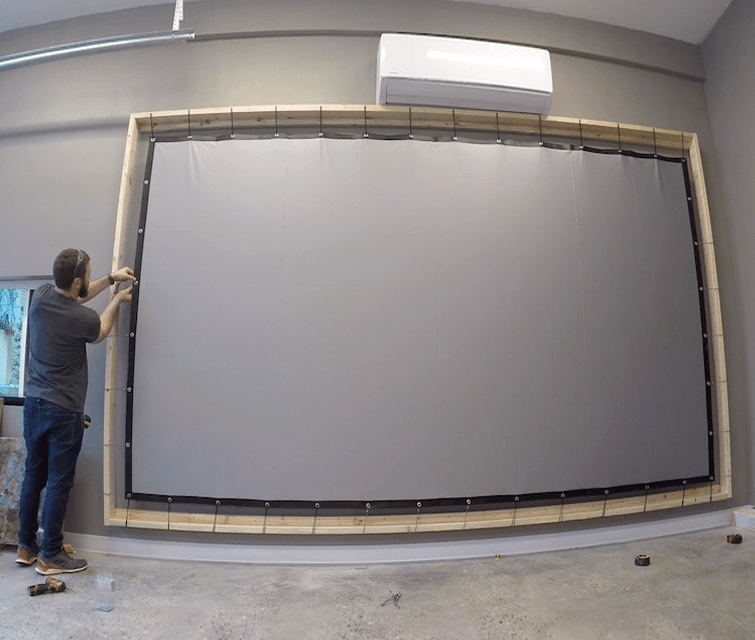Our projectors seemingly have multiple functions and can be used in any number of ways. However, the most common uses involve presentations in classes and business meetings, watching movies at home, watching TV programs, and gaming. However, a malfunctioning projector could throw a wrench into your plans to do any of the above activities.
Also, your projector problems could be caused by a large variety of issues. As a person who tends to use the projector a lot, it would do you good to familiarize yourself with standard troubleshooting practices. This way, you won’t have to call in a technician every time the machine presents a small issue.
Notably, you will likely save some of your money by knowing what to do when your machine acts up. As such, we’ve compiled below some of the essential tips and tricks you’ll need to troubleshoot your projector.
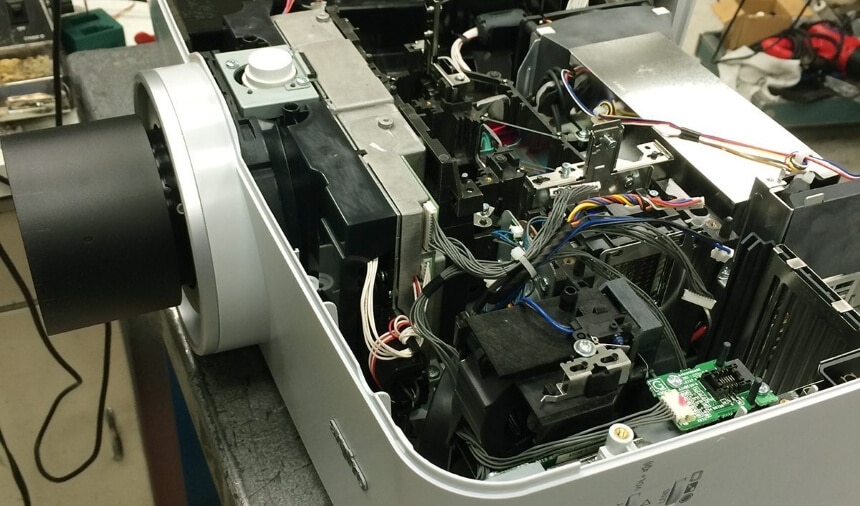
Also, sometimes different problems can have the same troubleshooting solutions, and thus, you may see a bit of repetition here and there. However, to ensure that you have all the data and information you need, this repetition and emphasis might be necessary. Without further delay, these are the most common projector issues you may come across:
One symptom that you will likely experience during the lifespan of your projector is an overheating body. If the temperature gets too high, you may get a warning message on the screen. The machine can also shut down without warning, and it does this to protect the internal components from damage.
The other reason for a shutdown may be that the heat damaged some of the internal components, and the projector can no longer work. However, even before things get this dire, there are various tell-tale signs that your projector is overheating.
One is that you will feel the heat from the machine from where you’re sitting. This isn’t something that should be ignored. Instead, you can move closer to the machine to investigate by touching the case.
Also, for some reason, your fan might be too loud, which gives the impression that it is overworking. This also warrants an investigation of the surface of the machine. If you’re afraid to touch the machine’s body, you can try to touch the table-top on which the device is mounted. Since it is so close to the machine, it will be hot to the touch as well.
If the projector’s temperature is too high, you should definitely shut it down and try to fix it. Wait until the machine is completely cool before trying any of these steps.
The first one is to move the machine away from the window or from anywhere where direct sunlight can reach it. In fact, this may be the reason why your machine is malfunctioning in the first place. It is also one reason why manufacturers recommend a dark room for projector use.
Next, you can clean up some vital interior components. This is especially effective if you noticed the fan overworking. Notably, the reasons for overworking include dust on the fan, which makes it heavier. It could also be because the filters are blocked by dust and debris, and as a result, the fan is struggling to move air through them.
As such, opening up an overheating projector and getting rid of the gunk and dust could be the key to solving your problem. If you do not hear the fan despite the machine heating up, the component may be damaged. In this case, the only recourse is to replace it. However, exhaust the other troubleshooting measures before you resort to this one.
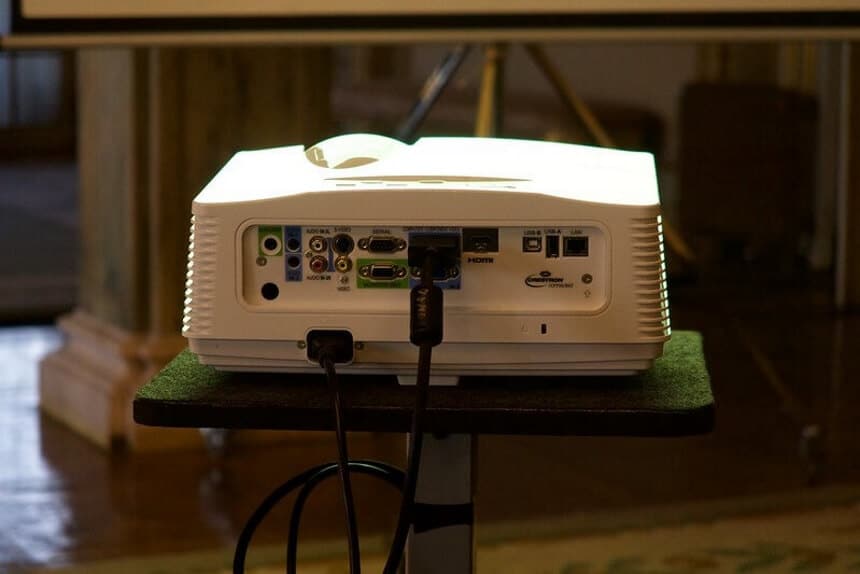
Always assume that it is a small problem until you have a confirmation the machine can’t be fixed.
Start your troubleshooting process by checking all the connections. These include the socket, power cable, media cables, and finally, the ports in the machine and input devices.
In some cases, someone may have unplugged your power cable, or the socket is malfunctioning. You can solve this by finding a working socket and plugging it in.
Some problems causing your projector not to turn on may be harder to notice. One example is the pins in your VGA port may be bent. Another reason for this problem is your remote batteries are completely drained of power. As such, no matter how many times you press the on button, the machine won’t start working unless you replace the batteries.
Next, you can try resetting the lamp timer on the projector. The process for doing this is different for various projectors, and you may have to refer to your manual for directions.
Finally, you can try to turn the standby mode off. Notably, you won’t have to resort to trial and error while attempting to fix some machines. They have indicator lights, and if one is blinking or on, you can consult the manual and pinpoint the problem. Fixing it should be a cakewalk after that.
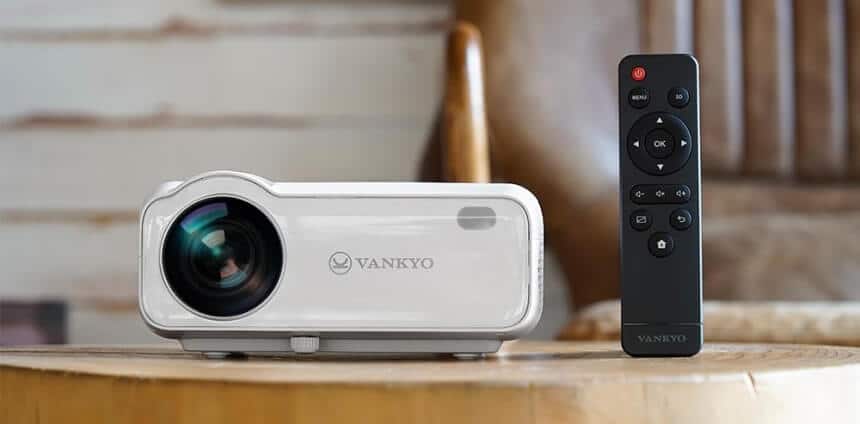
Conversely, it could be that the lamp inside the machine wasn’t assembled right. This will necessitate that you open the machine and correct the issue. Another issue that could be the cause is a faulty power button on the machine. Here you’ll need to replace the button where again you need to open the machine.
If you’re not exactly handy when it comes to electronics, we would advise that you leave opening the machine to a technician. You’ll have to pay them, which is a bit costly. However, if you open the machine without the right knowledge, you could end up damaging the projector even more.
You may also face situations where the machine turns on after you press the power button but then powers off almost immediately. Similar to when the machine won’t turn on, you start by checking the state of the connections, cables, and ports.
If the power cord, connection cable, and the relevant ports are all in tip-top condition, you can try checking the condition of the fan. If it is not rotating, there’s a chance the machine will overheat and damage internal components. As such, it will shut down to prevent this eventuality.
If the fan is the issue, you can clean it up so it can spin more freely. Additionally, if the fan is a dud, you can replace or fix it with a technician’s help if you don’t know your way around the projector’s parts.
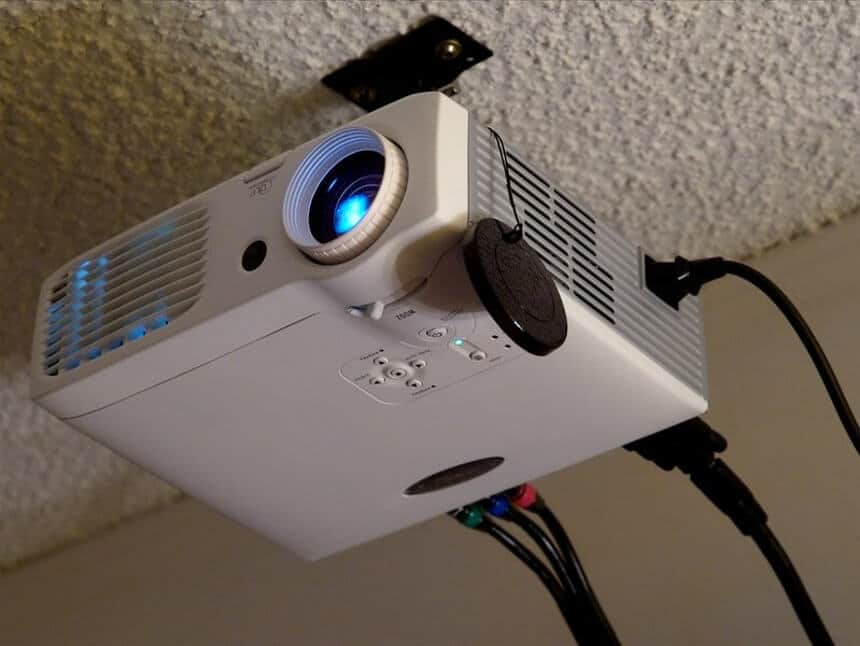
Check if you’ve removed the lens cap from the projector and that there are no obstacles between the lens and the screen. Another potential reason for this is an incompatible source device or source file. For the former, you might need an adapter that allows the two machines to work together.
The user manual may have information on compatible machines, which might help clarify the situation. You can also try out the projector with other source devices to see if they work. Additionally, your projector may not be compatible with all file types. As such, if you’ve connected the device to a hard disk or a USB stick, the file type may be the issue.
You can correct this by looking for compatible file types or changing file extensions. The manual will also spell out which file types the projector can and cannot play.
Also, ask yourself: am I using the right input? You may have connected the projector and your source device using a VGA cable, and yet you’ve selected HDMI as your input option. Consequently, cycle through the various input options using the projector’s remote to ensure you’ve selected the right one.
If any of the ports on the projector is damaged, you can use an alternative connection method. Some projectors even have multiple ports of the same kind, which can help if one is malfunctioning. This is one reason why users and reviewers recommend the Optoma UHD30 projector. It has two HDMI ports, and if one doesn’t work, moving to the next one should be a piece of cake.
If you’re using a laptop or computer alongside the projector, you can try pressing the fn and the monitor button simultaneously. In most Windows laptops, the monitor button is the f4 key. In turn, this will tell the laptop to direct the signal to the HDMI port rather than to the laptop’s screen.
Dirt and dust may also have accumulated on the lens to the point where they hinder the image from being displayed on the screen. The only solution to this is to clean the lens. As for the last simple problem, it may be that your projector is still in standby mode. In many cases, turning it off then back on again should correct the issue.
More complicated issues include the fact that the lamp may have burned out and needs to be replaced. The lamp ballast that provides power to the lamp may also be at the end of its life. Both issues will require a replacement of some internal components. For this, we strongly recommend that you hire a technician for the job as it will ensure the product doesn’t suffer further damage as you’re tinkering inside.
If you do not see the full image, it could be because of a discrepancy between the projector and the source device’s resolution. If you can determine the projector’s maximum resolution and adjust the source device to match it, you should be good to go. High-resolution projectors come highly recommended since they won’t have any issues dealing with high-resolution video sources.
Often the projector’s resolution will be mentioned in the manual. Remember that the process for changing the resolution will vary depending on the source device being used. Some of them will also have manuals that will inform you on how to go about the process.
Also, you could be zooming in to the image too much with your projector. Consequently, zooming out using the knob on the projector can help you see the whole image on the screen.
The image quality could also be unsatisfactory to the point of being unwatchable. Some characteristics of low image quality include dull and faded images, shadows, and visible dots and lines.
For shadows and dull and faded images, the problem could be as simple as the wrong optimization settings. As such, you can check the resolution, zoom, brightness, contrast, and color configuration settings. A simple adjustment in any of these areas could correct the issue leaving you with beautiful, crystal clear images.
Remember that you should correct the settings in both the projector and the source device. Additionally, the bulb in your projector could be approaching the end of its life, therefore, necessitating a replacement.
In some cases, the projector may not even be the problem. If, for instance, you use the projector in a well-lit room, the images will no-doubt be dull and faded. However, you can reduce the ambient light when you turn on the machine, and the image quality will improve significantly.
Where you see dots and lines on the screen, the culprit could be a faulty connection between the projector and the source device. Checking the wires and connections should help you confirm if this is the case. If the cables are damaged, you can purchase others on Amazon or from other vendors.
If the problem of dots and lines persists, it’s likely a more severe issue, such as damage to the digital micromirror device (DMD) chips in DLP projectors. In such a case, the DMD chip will have to be replaced with new ones.
Again, due to the technical nature of the job, get a technician to help you out. If you want to ensure your DMD chips last you a long time, clean the air filters in your projector regularly. Also, keep the machine as far away from dust and heat as possible.
Lastly, the dots and lines could still be because of a malfunctioning mainboard. For this problem, you’ll have to throw out your current projector and get a new one.
Another common projector display problem is distorted colors on your projection. If you spot this issue, first look into the VGA cable and port if you use one. If you find any sort of damage, it could be the reason for your distorted colors.
Also, the distorted colors may come about as a result of improper display configurations. As such, you should check the image settings on both the projector and the source device to see if they match. If they don’t, you can take it upon yourself to correct the issue.
If the distorted colors persist, there are only two other possible reasons. One is projector color wheel problems while the other possibility is a damaged lamp. Both of these will require that the components in question be replaced.
Another projector color problem you can encounter in your daily use of the projector is the colored edges on your screen. This problem is common with LCD projectors and is caused by a damaged and faulty prism.
Notably, the prism is a critical component of any LCD projector, and getting one can be quite an expensive affair. Consequently, it may be better to get a new projector instead of trying to fix your old one.

First, try all the input ports again. Go through them one by one confirming that they don’t work. Remember to select the appropriate input method on the projector screen as well. For example, if you’re using the HDMI input, select the HDMI option on the projector. If you’re using the VGA port and cable, choose VGA on the projector.
Also, carefully inspect all the cables you are using. Are they damaged or broken in any way? Are there exposed wires? If the cables are damaged, they could be the reason for the problem, and you would be better off getting new ones.
If so far the issue hasn’t been rectified, try checking the adapter. Use it with another source device and cable, and if the problem persists, you need to buy a new one. Additionally, if you have electrical tools lying around in your house, you can take out the electrical tester pen to see if electricity is flowing through the ports.
The final troubleshooting measure is restarting both the projector and the source device. If the projector inputs are still not working, you might be dealing with a dead projector or a faulty mainboard.
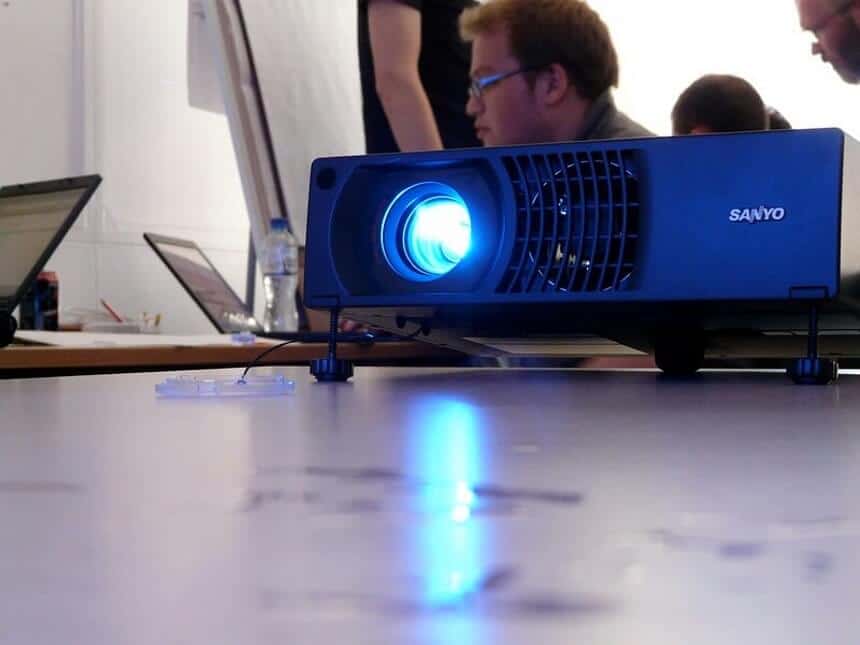
You might have to refer to your manual to decipher the full meaning of the flickering light. However, here are some of the problems that the blinking lights may warn you about.
One is that the machine is overheating. If it is, we’ve already discussed the right measures to correct the situation in this write-up. The flickering light could also be telling you to get a new lamp since the old one is at the end of its life.
Of course, if you’re getting a replacement lamp, you should contact your manufacturer for spares. If not, you can try third-party vendors like Amazon that could be stocking spare lamps as well. When switching out the lamp, get a technician unless you know your way around electrical circuits and are comfortable with them.
Lastly, the blinking light may just be telling you the machine is on standby mode or that the projector is on and working.
Of course, you can’t enjoy watching movies, TV, and sports without sound, which is why some manufacturers put speakers in their projector offerings. However, every now and then, as you use the machine, you’ll notice that you can’t hear the dialogues, music, and sound effects.
This, of course, necessitates that you troubleshoot the machine so you can find and fix the problem. The likely culprit for why there is no sound is that you set the volume too low or you muted the device. As such, try to unmute it or increase the volume.
If it is not the projector’s volume settings, it might be the volume settings on the source device, e.g., your laptop. Raising the volume here may help solve the problem.
Check the audio connection as well. If you’re using an aux cable, confirm it’s working and that both the output on the source device and the input on the projector are in working order.
If you’re using HDMI to connect the two devices, select the PCM setting in your source device’s settings. This will ensure the sound will come out of your projector rather than the source device.
Some Mac computers also don’t support HDMI sound transfer. Once you ascertain that your Mac computer is one of these devices, you should look to purchase an audio cable that works. You can then connect it to the projector as well.
Finally, you may be using the USB display function to connect your computer and the projector. Ensure you activate the audio output in the dedicated projector app on your computer, and this will turn on the sound.
Aside from the speaker, the most common culprit when your projector is making loud noises is the cooling fan. Like we mentioned before, if the airways and air filters are blocked, the fan will have to work harder to cool the device. This may result in an audible strain where you hear the fan rotating.
Additionally, the fan could be struggling to cool the machine if it’s covered in dust and debris. Notably, dust and debris on the fan blades can make them heavier, making it harder for the blades to rotate.
Of course you can troubleshoot these problems by deep cleaning the machine. Start with the fan and finish with the air filters and vents in the machine. Use compressed air cans to blow away the dust and debris as you’re cleaning the machine’s interior.
Using a blower or a vacuum to clean a projector is generally a bad idea and should be avoided.
Another reason why the fan could be overworking is that your projector is overheating. Shutting it down will allow it to cool down much faster than if you were using it. Consequently, the next time you turn it on, the fan will work normally, and thus you won’t hear any loud noises from the machine.
Due to the constant updates pushed to Windows 10 users by Microsoft, you can tell a few things still need fine-tuning in the operating system.
Consequently, your projector may not be detected by your computer the first time you use it. The first solution you can try with these Windows 10 projector problems is to update the drivers Trusted Source Update drivers in Windows Learn how to update drivers in Windows using Device Manager to update or reinstall a driver. support.microsoft.com on your computer.
If this fails, make sure you’re on the latest version of Windows 10, and if not, update it. Notably, Windows 10 updates are usually automatic, so it is improbable that this is the cause. However, it doesn’t hurt to confirm this.
Additionally, all Windows devices have a hardware and devices troubleshooter. With this you can press a button and the computer will check to see all the reasons why your projector is not being detected. It will then try to solve these problems or recommend manual courses of action to correct the situation.
If the projector stops being detected on your Windows 10 computer after an operating system update, the latest drivers may be the problem. As such, you can rollback your drivers Trusted Source How to roll back a device driver on Windows 10 | Windows Central In this guide, we show you the steps to roll back to a previous device driver if a new update is causing problems on your installation of Windows 10. www.windowscentral.com to previous options that could easily detect the projector. You then won’t need to get a new projector to keep enjoying the experience.
The remote control malfunctioning or failing to work could also be a cause for concern. That said, more than ¾ of the time you experience this issue, you can solve it by putting in new batteries. You can also check the placement of the batteries to ensure they are correctly aligned.
Additionally, most remotes will not work if you’re trying to use them from the next room. Some of them use infrared lights to transmit signals, which means they need a clear line of sight to the projector to work. Also, the operating range of the remote control is limited, so make sure you factor this in as well.
Other signals in the surroundings can affect the functionality of the remote as well. As such, another infrared device in the vicinity, the lights in the room, or even direct sunlight could be why the remote stopped working.
Remove suspect pieces of technology from the room and ensure the lighting is favorable for remote and projector use. A button being stuck on the remote could also force the projector to go into standby mode. This will make it seem like the remote is not working while all you have to do is unstick the button in question. If all else fails, look for a replacement remote on Amazon or in other stores.
Most of the Optoma projector problems can be remedied by troubleshooting the device according to the instructions we’ve given above. However, for emphasis, we will repeat some of the troubleshooting steps you need to prioritize with this line of projectors.
For one, always start by ensuring all ports and cables are in top shape and that you have connected them correctly. Additionally, make sure the placement of the lamp in the projector was done correctly.
Your projector’s manual should have a whole section dedicated to replacing the lamp. This can help you check the placement of the component. Follow that up by adjusting the focus ring to achieve better images, adjusting the zoom lever, and adjusting the keystone settings.
Notably, adjusting the keystone settings should allow you to eliminate any slanting in the image. If the lamps are completely burned out, you can replace them as well. Finally, you can turn off the machine, wait for a bit then turn it back on if your controls are acting up. This will reset them and allow you to use the machine normally.
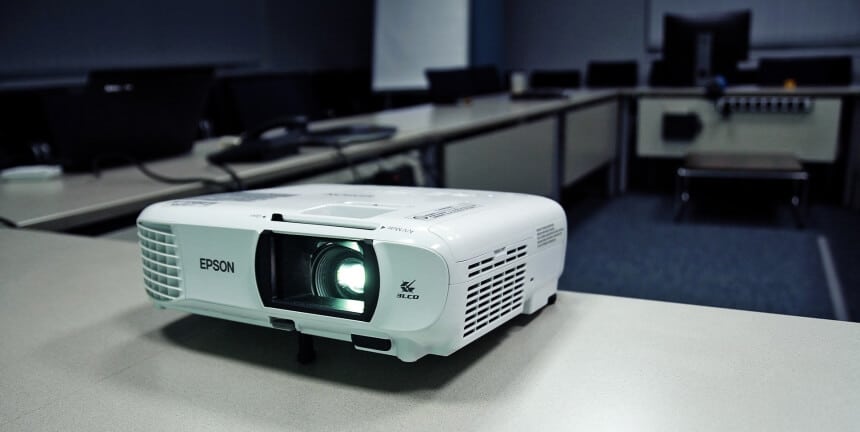
When this orange light goes steady, it means that you failed to turn the machine off in time. Also, the projector has automatically turned off to prevent further damage to the internal components from the heat. You should let it sit for a while before using it again.
Other problems that could be diagnosed using the indicator light may include lamp issues, fan issues, and even power errors. Again, always check to confirm that all connections between the projector and the source device are in working order. None of the cables involved in the setup should be loose. Lastly, when you set the device up, do remember to adjust the focus and colors for the best image results.
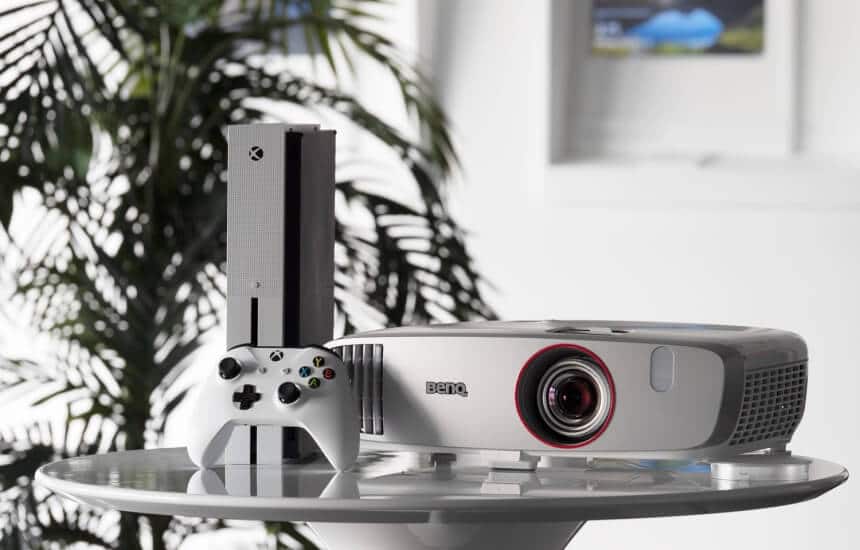
If the images are not being displayed on the screen, you can cycle through your connections, all the while unplugging them and plugging them back up. This will help confirm that you got the connections right.
These projectors also keep a running tab on how long you have used the lamp in the machine. This should tell you how long you have before the lamp is completely unusable. Also, a common Benq Projector lamp problem is that the older your lamp grows, the dimmer the images produced.
Always confirm that you’ve selected the right input source. Additionally, if the resolution doesn’t match in both the projector and the source device, image visibility may be affected.
In the same breath, check on the source device’s video signal and confirm its compatibility with the BenQ device. Lastly, ensure you’ve gotten the settings right in terms of color, contrast, and focus.
Jumping to buy a new device as soon as you experience a few projector problems is counterproductive and will have you wasting your money every few months. Remember that the new machine will also come with the same issues, such as projector overheating and projector flickering.
Consequently, if you learn how to troubleshoot the machine, you can save yourself some bucks in the long run and get to enjoy the investment for longer. You can also bookmark this write-up so you can always have access to advice on what to do when your projector starts acting up.


